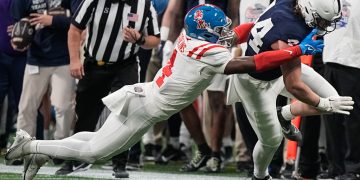For a brief moment during the first presidential debate, I found myself in the middle of a spat between Donald Trump and Joe Biden. As the two candidates bickered over healthcare, the president told the nation that he is making insulin “so cheap it’s like water.” This was certainly news to me, along with the other eight million insulin-dependent diabetics living and dying in the United States.
To be clear, insulin is not cheap like water. The insulin in my refrigerator is more expensive — by volume — than human blood, printer ink, Chanel No. 5 or LSD. The President was probably referring to a handful of executive orders he signed over the summer, which might make some insulin for some diabetics somewhat cheaper. At any rate, these orders don’t go into effect until next year. So, in 2020, the average insulin-dependent diabetic in the United States still spends $500 a month on the stuff. And there — but for the grace of Medicaid — goes John Hydrisko.
Insulin keeps my blood from turning into an acid that will rot my body from the inside out, but it’s also a strong bit of rhetoric. Donald Trump threw it around during the September debate, Joe Biden discussed it during interviews and candidates frequently mentioned it during the Democratic primaries. The message is straightforward: without insulin, a diabetic will certainly die a horrible death; with insulin, a diabetic might live. The comparisons are clear: a diabetic in the United States pays $350 for a vial of Novolog; a diabetic in Canada pays $45 for the exact same vial of Novolog. The exploitation is obvious as producing a vial of its flagship insulin costs Novo Nordisk about $3. America represents 15% of the global insulin market but generates 50% of global insulin revenues.
In 1996, a vial of Eli Lilly’s Humalog sold for $21. As of last year, the same vial sells for $275. While politicians tend to blame this 1,200% increase on the complexities of American healthcare and on the failings of their political rivals, the scheme to hold American diabetics hostage is rather straightforward. Whereas most countries require that drug companies modify and improve drug formulas to retain patents, America only requires that companies modify formulas to retain patents.
The three insulin giants — Novo Nordisk, Eli Lilly and Sanofi — have made small changes to their formulas in order to keep their drugs under patent so that they will not have to compete with generic insulins. At the same time, the triopoly has increased prices in lockstep so that they will not have to compete with one another. America’s fetishization of free-market medicine — with all of its talk of competition, affordability and innovation — has allowed a cartel to charge astronomical prices for a first drug discovered in 1921.
American politicians will continue to talk about this injustice, but they are unlikely to take action against it. In 2019, these three companies spent $15 million on lobbying and made $3 million in political contributions. Their money went to both Republican and Democratic congressional campaign committees, to both Donald Trump and Joe Biden. Neither legislation about patent issues nor executive action against price-fixing is in the offing.
These astronomical prices only hint at an incalculable human toll. There are 300,000 diabetics in Mississippi. The poorest state in the nation suffers from the highest rate of diabetes, with about 14% of the adult population affected. When diabetic Mississippians are able to buy insulin, they are robbed of livelihoods. When diabetic Mississippians are unable to buy insulin, they are robbed of their eyesight, their kidneys, their feet and their lives.
John Hydrisko is a senior English, philosophy and history major from Philadelphia, Penn.



























